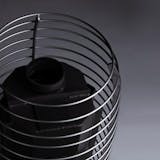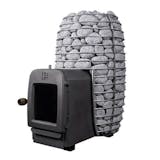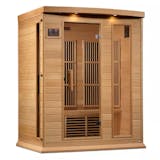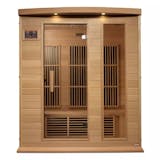What’s the Difference Between Full-Spectrum and Far-Infrared Sauna?
There are so many different types of saunas these days, and infrared technology is becoming the most popular not just because it’s more affordable. It uses invisible light waves to gently heat the body directly, without warming the air around you like traditional saunas.
This allows the sauna to achieve a similar effect at much lower temperatures for a more comfortable experience. Not all IR saunas are the same, though.
The difference between full-spectrum and far-infrared sauna is actually really simple - it’s just a matter of different wavelengths being emitted. There are three main classifications of infrared light: near-infrared (NIR), mid-infrared (MIR), and far-infrared (FIR).
Each wavelength penetrates the body to a different depth and activates different physiological responses. Understanding how each of these wavelengths works can help you determine which sauna setup best supports your wellness goals.
Overview of Far-Infrared Saunas
As the name suggests, these saunas only emit the far end of the infrared spectrum (usually between 5.6 to 20 microns). This wavelength penetrates the body deeper than near or mid-infrared, gently warming muscle tissue and helping you work up a sweat at lower temps.
These saunas rely on carbon fiber or ceramic heating panels to produce even, consistent heat across the space. They’re very energy efficient and super comfortable. We recommend these to anyone looking for deep relaxation, detoxification, and recovery at an accessible price point.
Just know you’re missing out on a wide spectrum of other infrared light wavelengths. That’s where the other half of the far-infrared vs full-spectrum sauna comes into play.
Overview of Full-Spectrum Infrared Saunas
Full-spectrum infrared saunas combine the benefits of far-infrared light therapy with near- and mid-infrared wavelengths. This is the most comprehensive sauna experience possible.
These saunas rely on more advanced heating systems, typically combining different element types like LEDs or halogen bulbs for near-infrared and carbon or ceramic panels for mid and far-infrared.
This delivers a layered experience with surface-level stimulation, muscular relief, and deep tissue heating. In other words, it’s the best balance possible in infrared sauna therapy.
Be aware that this type of experience comes at a cost, though. Full-spectrum saunas are usually more expensive than far-infrared saunas. This is just one thing you’ll need to consider in choosing between a far-infrared vs full-spectrum sauna.
What About Near-Infrared Saunas?
We want to quickly touch on a different wavelength you may come across - and one you’ll get in a full-spectrum sauna as well. Near-infrared saunas emit shorter wavelengths (typically 0.7 to 1.4 microns) that don’t work deep into the muscles. They just affect the outer skin layers.
These wavelengths are commonly used to support cell regeneration, skin health, and wound healing, but you won’t really get the same infrared sauna experience. That’s why for the sake of today’s conversation we’ll focus just on full-spectrum vs far-infrared sauna differences.
Wrapping Up Our Comparison of Far-Infrared vs Full-Spectrum Sauna
The right infrared sauna isn’t about more heat or more features. It’s a matter of aligning the sauna to your wellness goals. That’s what it boils down to in choosing between a full-spectrum vs far-infrared sauna.
Far-infrared saunas offer simplicity and deep relaxation, while full-spectrum units provide a broader therapeutic range. Both are effective, so just think about what you want from the experience.
Whether you’re on the market for an indoor infrared sauna or outdoor infrared sauna, Heaven Livings is here to help you get set up with the ideal match for your goals and budget.
It all starts with a conversation, so connect with our experts today and we’ll help you weigh your options! Or, you can take our sauna quiz below to narrow it down.
















